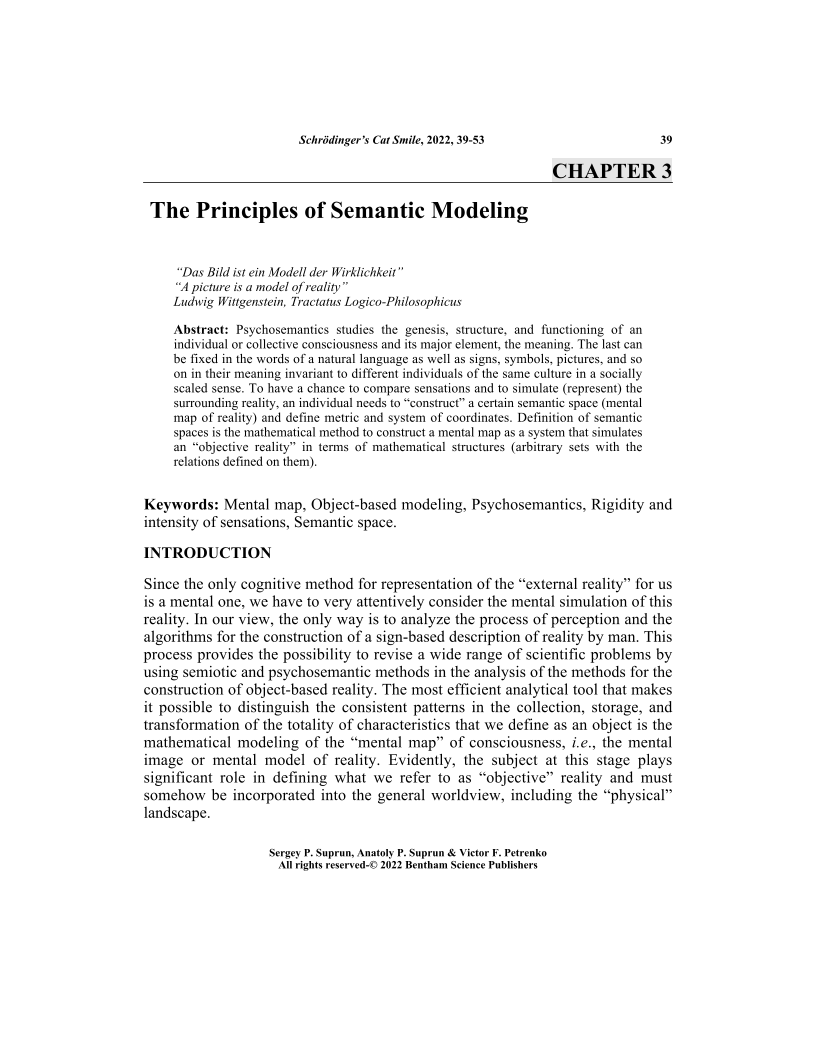The Principles of Semantic Modeling

- Authors: Sergey P. Suprun1, Anatoly P. Suprun2, Victor F. Petrenko3
-
View Affiliations Hide Affiliations1 Semiconductor Physics, Siberian Branch of the RussianAcademy of Sciences, Novosibirsk, Russia 2 Psychology Department, Lomonosov Moscow StateUniversity, Moscow, Russia 3 Psychology Department, Lomonosov Moscow StateUniversity, Moscow, Russia
- Source: Schrödinger’s Cat Smile , pp 39-53
- Publication Date: October 2022
- Language: English
The Principles of Semantic Modeling, Page 1 of 1
< Previous page | Next page > /docserver/preview/fulltext/9789815049664/chap3-1.gif
Psychosemantics studies the genesis, structure, and functioning of an individual or collective consciousness and its major element, the meaning. The last can be fixed in the words of a natural language as well as signs, symbols, pictures, and so on in their meaning invariant to different individuals of the same culture in a socially scaled sense. To have a chance to compare sensations and to simulate (represent) the surrounding reality, an individual needs to “construct” a certain semantic space (mental map of reality) and define metric and system of coordinates. Definition of semantic spaces is the mathematical method to construct a mental map as a system that simulates an “objective reality” in terms of mathematical structures (arbitrary sets with the relations defined on them)
-
From This Site
/content/books/9789815049664.chap3dcterms_subject,pub_keyword-contentType:Journal -contentType:Figure -contentType:Table -contentType:SupplementaryData105

